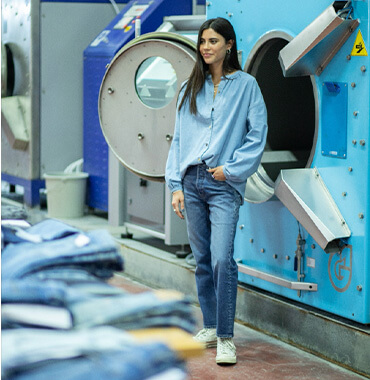What Is Sustainable Influence? And How Can Brands Tap into It?
The influencer economy has become one of the go-to places for advertisers and public relations professionals to head to more authentic marketing campaigns and reach niche audiences. But over the past couple of years, there has been an influx of the new “sustainable fashion” influencer.
The influencer economy has become one of the go-to places for advertisers and public relations professionals to head to more authentic marketing campaigns and reach niche audiences. But over the past couple of years, there has been an influx of the new “sustainable fashion” influencer. A public figure that believes in voting with their dollars and supporting the brands that are using their businesses for good. With great intentions to promote more conscious modes of shopping, these influencers are often criticized for being hypocrites. So what does true sustainable influence mean? What does it look like? And how can brands tap into it? First off, the sustainable fashion enthusiast is not the same as a sustainable fashion activist. A sustainable fashion enthusiast loves shopping from Instagram’s most trendy sustainable brands and promotes how they are “more sustainable” than their counterparts. But, this language can get very dangerous! Calling something more sustainable rather than actually telling us what was done in the process isn’t doing much good. This creates a judgmental language that is confusing for consumers to understand when every product out there calls itself sustainable. On the other hand, the sustainable fashion activist has also gained large followings on Instagram, where these public figures promote ideas and concepts rather than pushing products and trends. Take @ajabarber @clarepress and @orsoladecastro, for example. These public figures are using their followings to cast a light on issues within the fashion industry and provide actionable solutions on how consumers can actively engage in being part of the solution. One key theme that runs through these activists is the fact that you can not shop your way to sustainability. This is what sustainable influence should look like and what true sustainable influence means. So, is the judgement out there about sustainable influencers valid? Like with any company or organization, true changemakers are using their platforms for good, but there are also those falling into the traps of greenwashing and ignoring the systemic issues that need to be spoken about before promoting more consumption. So, how do you tap into the sustainable fashion activist’s influence? As a brand, it’s essential to do your research to make the best partnerships to reach your campaign goals. You want to make sure whomever you choose to partner with is as passionate about your concept as you are and does their research to put out reliable and accurate information. A couple of red flags to look out there are for facts with no source reference and cut & paste captions on sponsored posts. With the insufficient data that flows throughout our industry, it is crucial to equip your partner with the accurate data you want to be shared with proof to back up the numbers. You need to tell your partner what they are precisely promoting, not just the new product launch. What was the process used here that you are so proud about sharing? How did you achieve a carbon-neutral jean? Sharing the process and people behind the product with fashion activists is key. These activists are interested in promoting high-level concepts that prove their knowledge, which is something you need to tap into. Influencer marketing isn’t going away. It is constantly changing and evolving, but when it comes to promoting a new concept, the best way to approach it is exactly that—promoting the idea and process versus the product. That way you not only help promote your company, you are also helping your partner promote their ideals and reach their goals.
To view full content and a better mobile experience, try



